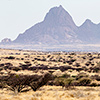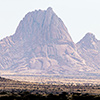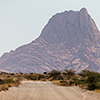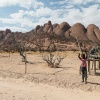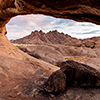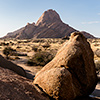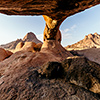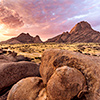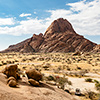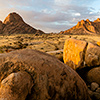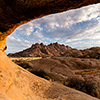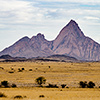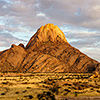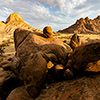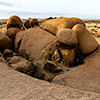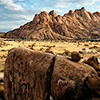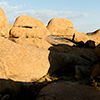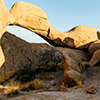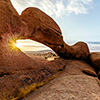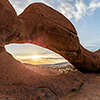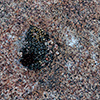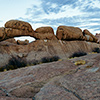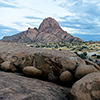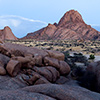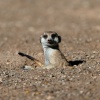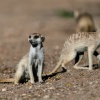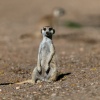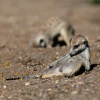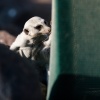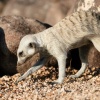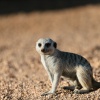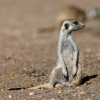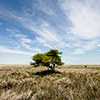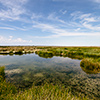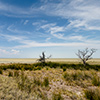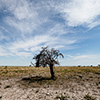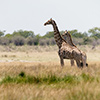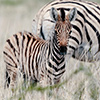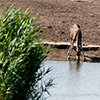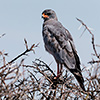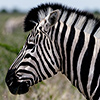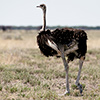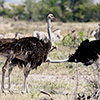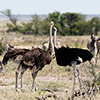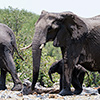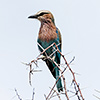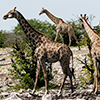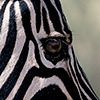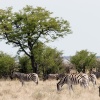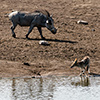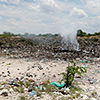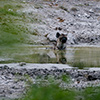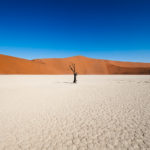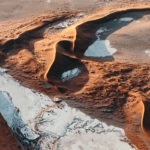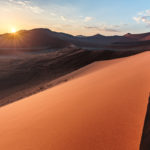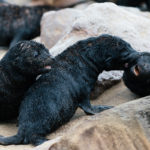Namibia’s Matterhorn and the Great White Place – From spectacular Spitzkoppe to Etosha Pan
The unconquerably smooth granite of Spitzkoppe is the solidified vent of an old volcano. Because of its shape Spitzkoppe’s second name is Matterhorn of Namibia. Its immediate vicinity is one of Africa’s most spectacular landscapes, being so impressive, that director Roland Emmerich shot parts of 10.000 BC over here. The volcano fossil towers a landscapes becoming more and more elevation-less in the northeast and culminating in the Etosha Pan, one of the world’s largest salt pans.
Granite from prehistoric times
I am coming from Damaraland, where around Twyfelfontein the ancient rock engravings of the San nomads can be found. The route leads over dusty gravel roads and along impressive Brandberg plateau towards the south. At the end is a place that enduced me a big “Wow!” back in 2003, when I travelled Namibia for the first time.
Before heading to Twyfelfontein I gave a Chinese backpacker a lift and it’s great to see the jaw of her usually emotionless Asian face dropping when approaching Spitzkoppe from the north.
I am lucky and the camp sites at the Spitzkoppe ist empty. I am even allowed to camp at the „Rock Bridge“ site where I stayed back in 2003 with a Nomad Overland truck. Meanwhile those trucks are big business and Nomad isn’t the only one by far. Means, one can be pretty unlucky as a patronised camp site could be completely occupied by a couple of those trucks.
Like back in the days of 2003, I enjoy climbing and jumping around on and between the roundish rocks. Though I still feel the pain of heavily bruised ribs, a present from climbing rocks in Damaraland.
The spectacle of the sun setting or rising at Spitzkoppe is massive and lets me blind out the pinching ribcage. Also “my” Chinese forgets the usual party discipline and shows some pleasure related emotions in her face when watching colours and shadows how only the African sun can paint them when it’s going down. German painter Caspar David Friedrich surely would have been killed by overinspiration ;-)
It is clearly visible that the dramatic landscape of Damaraland and Spitzkoppe has a very special origin as millions of years ago the coast line of Namibia was the virtual border between South America and Africa. Back then those two continents belonged to the last supercontinent Pangaea and volcanic activity as strong along this line.
During the course of time that border of continents migrated locally and became nowadays Mid-Atlantic Ridge. Volcanoes and their activities are the reason of Namibia’s huge diamond deposits – a story being told by abandoned Kolmanskop ghost town – and why the scenery of Spitzkoppe, Damaraland and Kaokoveld looks so surreal and like a different planet. Hence Spitzkoppe and its giant rock neighbour Pontok are very special remnants and witnesses.
One of the Spitzkoppe camp site’s major eye-catchers is the big natural rock arch (called rock bridge). People being photographically driven won’t find much sleep at that place as it’s pure joy to crawl around the rocks finding new perspectives and light conditions. The shutter won’t stand still for sure. Also there’s wildlife at Spitzkoppe, for example warthogs roam around and nocturnally calling little owls keep you awake at night. Also there are countless curious meerkats. They are cute but make use of their terribly pointy and sharp teeth once one disturbs them looting the box of fruits being part of the camping equipment.
The overland truck staying overnight some 200 metres away just unleashed its occupants. Not few people run into the scenery and are pretty noisily enjoying the sunset and their sundowner drinks. While those drunk have to find their way down from a slippery rock in sheer darkness, I prepare myself a fantastic 500 gram steak on a fire being stoked by Camel Thorn tree. What wonderful delectation against that tremendous backdrop.
The Spitzkoppe area marks a chance in Namibia’s scenery as it connects the rocky and cragged north-western territories of Damaraland and Brandberg with the deserted sandy southern plains spreading towards Swakopmund and Namib-Naukluft park, while in the northeast things get flat, very flat, as the giant Etosha pan, one of the world’s largest salt pans, takes over control.
The definition of flat
In Ovambo language Etosha stands for “Great White Place”, a name originating from a huge inland lake that is millions of years old and once was even fed by Kunene river. Through changes in the course of rivers and lacking water supply the lake fell dry leaving nothing behind but clay, limestone and salt.
If there are no heaps of rainfall, then Etosha pan is usually sparsely vegetated and either way the definition of flat. Also that African landscape was backdrop of a movie, that is Stanley Kubrick’s legendary “2001: A Space Odyssey”
On my drive through Etosha Pan suddenly a prominent and terribly astringent scent spreads all over the car’s cockpit. Reproachfully frowning at my Chinese, she instantly innocently affirms that she is not the origin of that sense numbing urine smell. She was right, as we just passed a slough having it all.
Speaking of water would be farfetched and lacking of reality as the pond is home to spotted hyenas. And hyenas love to have a generous piss inside, often. With that behaviour they mark their far smellable territory (something I can personally confirm) as well as use that sort of liquid for conservation of their prey. Yes, they store their food in water basically being urine. Enjoy your meal!
Once again the car’s interior gets flooded with a stinging scent. Once again I look at my Chinese co-pilot but quickly notice that fire is the actual origin. Immediately I check my Toyota, what is (of course) in tiptop condition. Not far away smoulders a rubbish dump. In the middle of Etosha National Park. How gross. That Africans have no sense for rubbish, well, that’s something we can’t hold against them as we Westerners don’t appreciate our environment as well, just have a look at the Volkswagen emissions scandal. The actual background: African economy depends on us, hence they import lots of western goods, heaps of packaged goods, that in the end is nothing but rubbish.
Somehow Etosha pan’s signposting is funny, as my significantly often used path through the bush somehow ends in an elephant bath house. Usual visitors upstairs watch me going into reverse because of an elephant mother having a junior. My presence is definitely not part of the plan, hence I back off and drive towards new Africa adventures.

